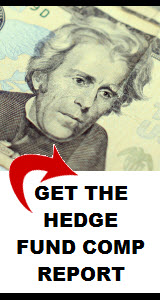You may not think being a farmer is a natural starting point for having a hedge fund job or running a hedge fund. But when you consider today’s volatile commodity markets, you may change your mind.
Renee Haugerud’s father was a corn farmer in a small Minnesota town. Haurgerud says she got bitten by the trading bug when she and her father used to study the basics of supply and demand in the corn futures market, according to a recent article in Barron’s.
She later studied forest resources at the University of Montana, and worked at agribusiness giant Cargill for 13 years. At Cargill, she traded corn and sunflower seeds and later on, fixed-income products at Cargill’s Swiss and Australian divisions. She tried to persuade Cargill to set up a proprietary trading desk, similar to an in-house hedge fund, but says she was the “wrong gender and wrong political persuasion” to convince Cargill executives to go ahead with the venture. She left Cargill to trade for NatWest Markets in Hong Kong and Hunter Douglas in New York.
In 1997, she founded her own hedge fund firm to capitalize on her own unique way of looking at the markets. She named her firm “Galtere”, based on a root word that means “pragmatic simplicity”, something you might expect given her roots.
Today, Galtere invests in commodities, metals, currencies, fixed income and stocks. But more than that, she’s betting on a gradual trend toward “tangible” assets over paper. One of her latest plays, according the Barron’s article, is on “inverse stagflation.” With the Fed and other central banks pumping money into the financial system, many investors are debating whether inflation or deflation will prevail. Haugerud thinks both can coexist, which is what she terms, inverse stagflation.
Haugerud also believes commodity-based, resource-rich economies such as Brazil, Canada, Turnkey and Southeast Asia will do well in the near future. Especially as the U.S. dollar continues to depreciate, in her opinion.
No surprise that she’s bullish on commodities such as corn and coffee, either, due to rising global demand and the chance that any supply shocks could send prices even higher.
For more on Haugerud’s perspective on global markets, check out the Barron’s article. In the meantime, a question for all traders out there: how and when did you get started in trading? What was the catalyst? Add your comments below.






Comments on this entry are closed.